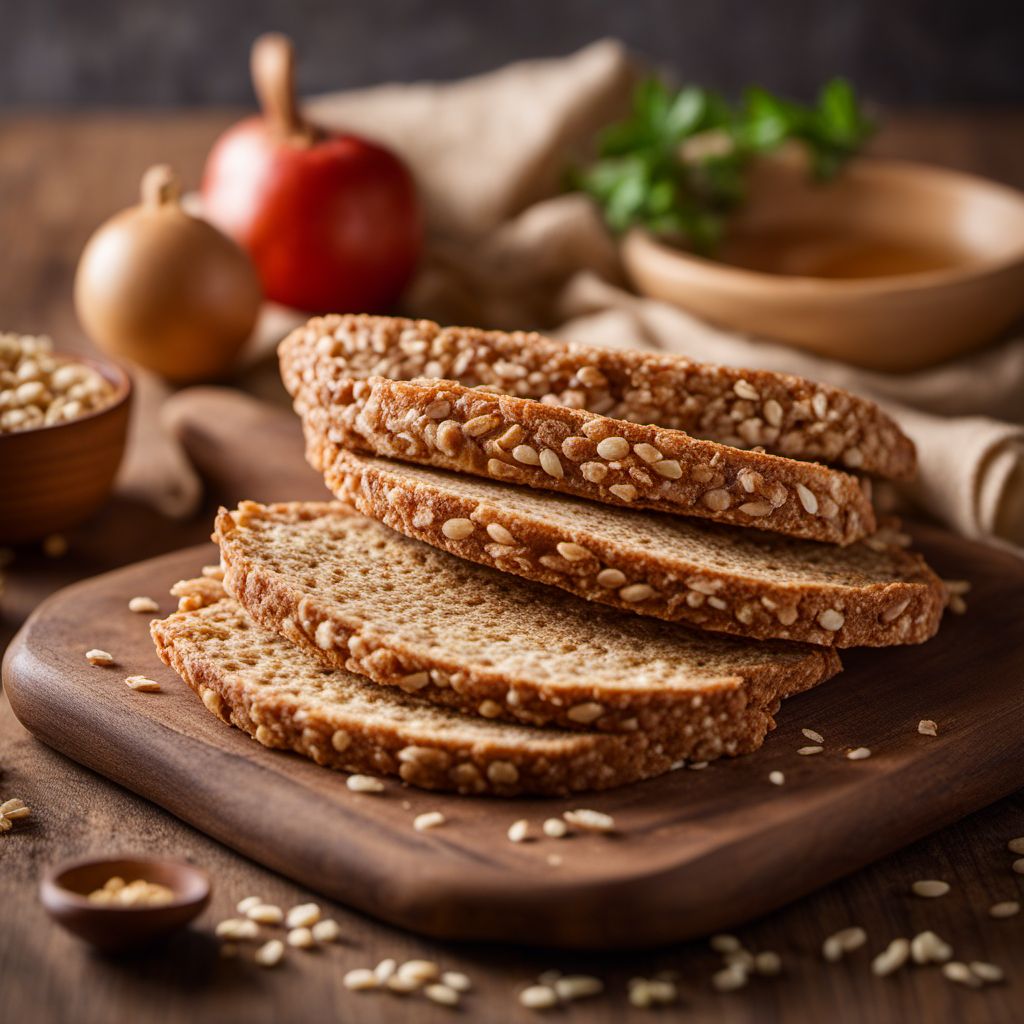
Ingredient
Crisp bread, rye, refined flour
Crisp Bread: The Crunchy Canvas of Culinary Creativity
Crisp bread is a type of bread made from refined flour and rye, resulting in a light and crunchy texture. It is typically baked until it becomes dry and crisp, making it a perfect base for toppings and spreads. The bread is thin and rectangular in shape, with a golden-brown color and a delicate, airy structure. Its dryness allows it to have a long shelf life, making it a convenient and versatile ingredient in the kitchen. Crisp bread can vary in thickness, ranging from thin and delicate to thicker and more substantial varieties. Its texture can range from delicate and brittle to sturdier and more substantial, depending on the specific brand or recipe. The flavor of crisp bread is mild and slightly nutty, with a subtle hint of rye. It provides a neutral base that complements a wide range of flavors and ingredients.
Origins and history
Crisp bread has its origins in Scandinavia, where it has been a staple food for centuries. The dry and crisp nature of the bread made it an ideal choice for long storage during harsh winters. It was traditionally made by drying out leftover bread dough, resulting in a thin and crispy texture. Over time, crisp bread evolved into a popular food item, not only in Scandinavia but also in other parts of Europe. Today, it is enjoyed worldwide and has become a versatile ingredient in various cuisines.
Nutritional information
Crisp bread is a nutritious choice, as it is low in calories and fat. It is a good source of dietary fiber, providing a satisfying crunch while aiding in digestion. Additionally, it contains essential minerals such as iron and magnesium.
Allergens
Crisp bread may contain gluten, making it unsuitable for individuals with gluten intolerance or celiac disease.
How to select
When selecting crisp bread, look for packages that are well-sealed and free from any signs of moisture or damage. Choose brands that use high-quality ingredients and have a reputation for producing crisp bread with a satisfying crunch.
Storage recommendations
To maintain the freshness and crispness of crisp bread, store it in an airtight container or resealable bag in a cool, dry place. Avoid exposing it to moisture, as this can cause it to lose its crunchiness.
How to produce
While it is possible to make crisp bread at home, it requires specialized equipment and techniques. It is recommended to leave the production of crisp bread to professional bakers who have the necessary expertise and equipment.
Preparation tips
Crisp bread can be enjoyed in various ways. It can be topped with spreads like hummus, cheese, or avocado, or used as a base for open-faced sandwiches. It can also be broken into smaller pieces and used as a crunchy addition to salads or soups. To enhance its flavor, lightly toast the crisp bread before adding toppings. Experiment with different combinations of flavors and textures to create unique and delicious snacks or appetizers.
Culinary uses
Crisp bread is commonly used as a base for open-faced sandwiches, known as smørrebrød in Scandinavian cuisine. It is also enjoyed with various spreads, cheeses, or toppings as a light and crunchy snack. Its versatility allows it to be incorporated into both sweet and savory dishes, making it a popular choice for creative culinary presentations.
Availability
Crisp bread is commonly available in Scandinavian countries, as well as in many European countries. It can also be found in specialty stores or online retailers that offer international food products.
